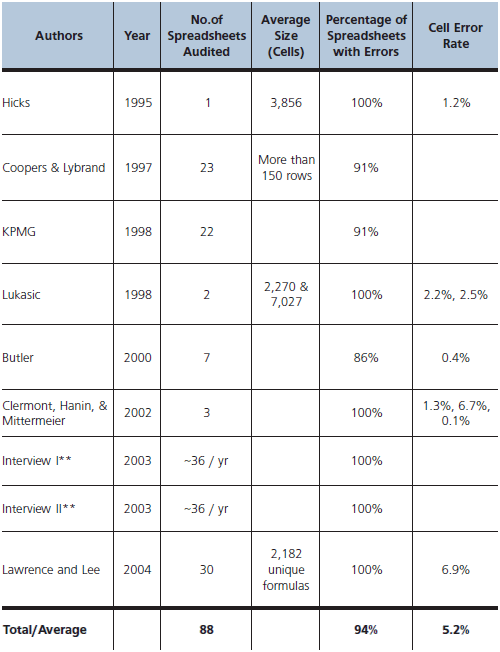Authors
Raymond R. Panko
Abstract
On the twenty-fifth anniversary of electronic spreadsheets, it might be well to pause and reflect on the downside of these ubiquitous, handy tools.
Ask a programmer if a recently developed program module contains an error. He or she will almost always say, "Certainly!" From the time they are nerdlings, programmers are taught that program modules, after careful development, will contain errors in 2% to 5% of all lines of code. They are also taught that extensive (and expensive) testing is necessary to get the error rate down to about 0.1% to 0.4% in shipping software.
In contrast, if you ask a spreadsheet developer the same question about a carefully developed spreadsheet with dozens, hundreds, or even thousands of lines of code, he or she will almost always say, "No," and will do so very indignantly. Testing? Forget about it.
A long stream of research has shown that very few firms have policies mandating the testing of spreadsheets, and few spreadsheet developers do testing on their own. When they do what they call "testing", furthermore, it usually consists of "looking over the spreadsheet for reasonableness" or some other whiskey cure (Of all the things that do not cure the common cold, whiskey is the most popular).
Sample

This table indicates that significant errors are, in fact, common.
For example, Coopers and Lybrand found that 91% of financial spreadsheets with more than 150 rows contained an error large enough to be financially material.
Over all of these studies, 94% of tested spreadsheets were found to contain errors.
Publication
2006, Decision Line, October, pages 8-10
